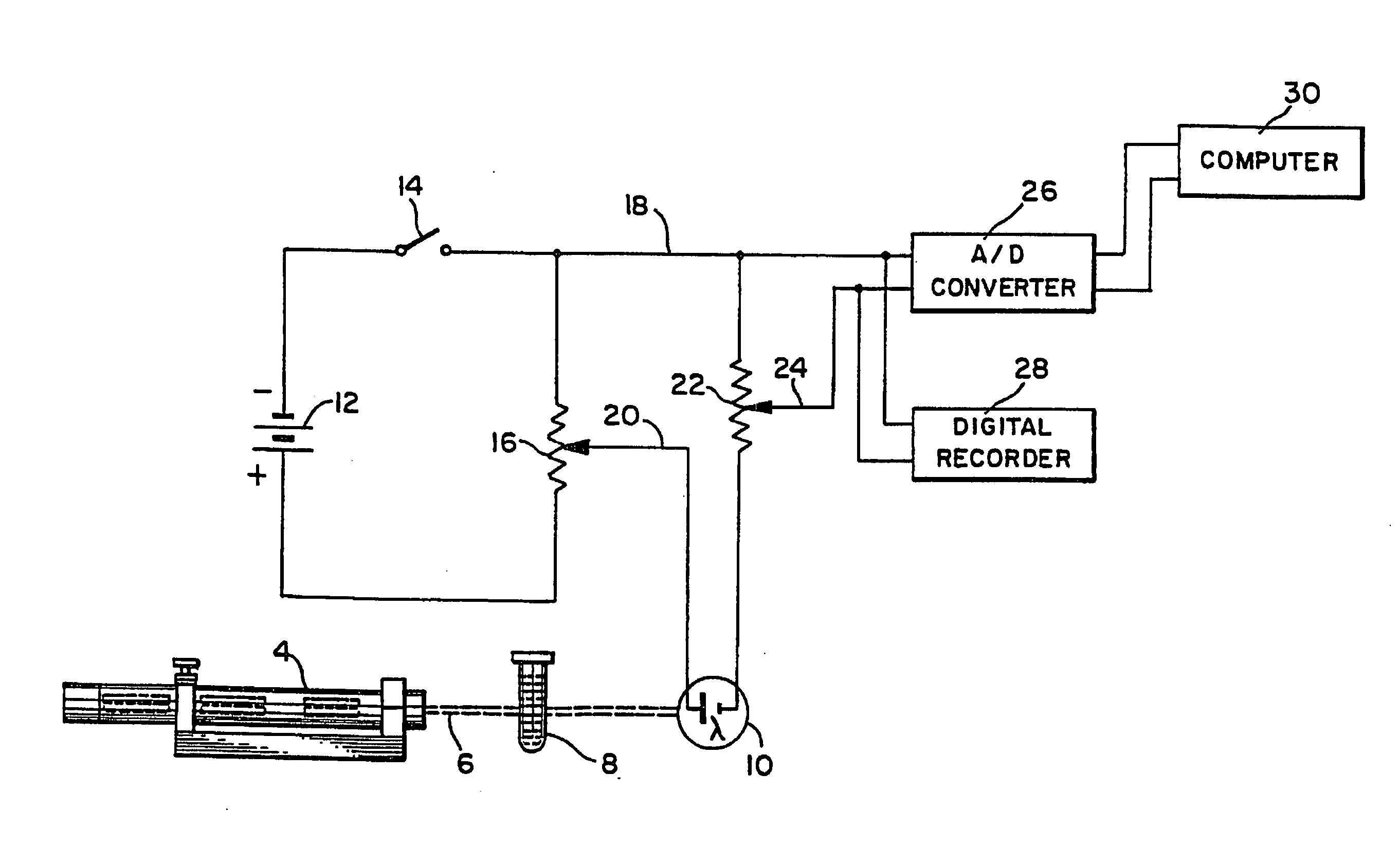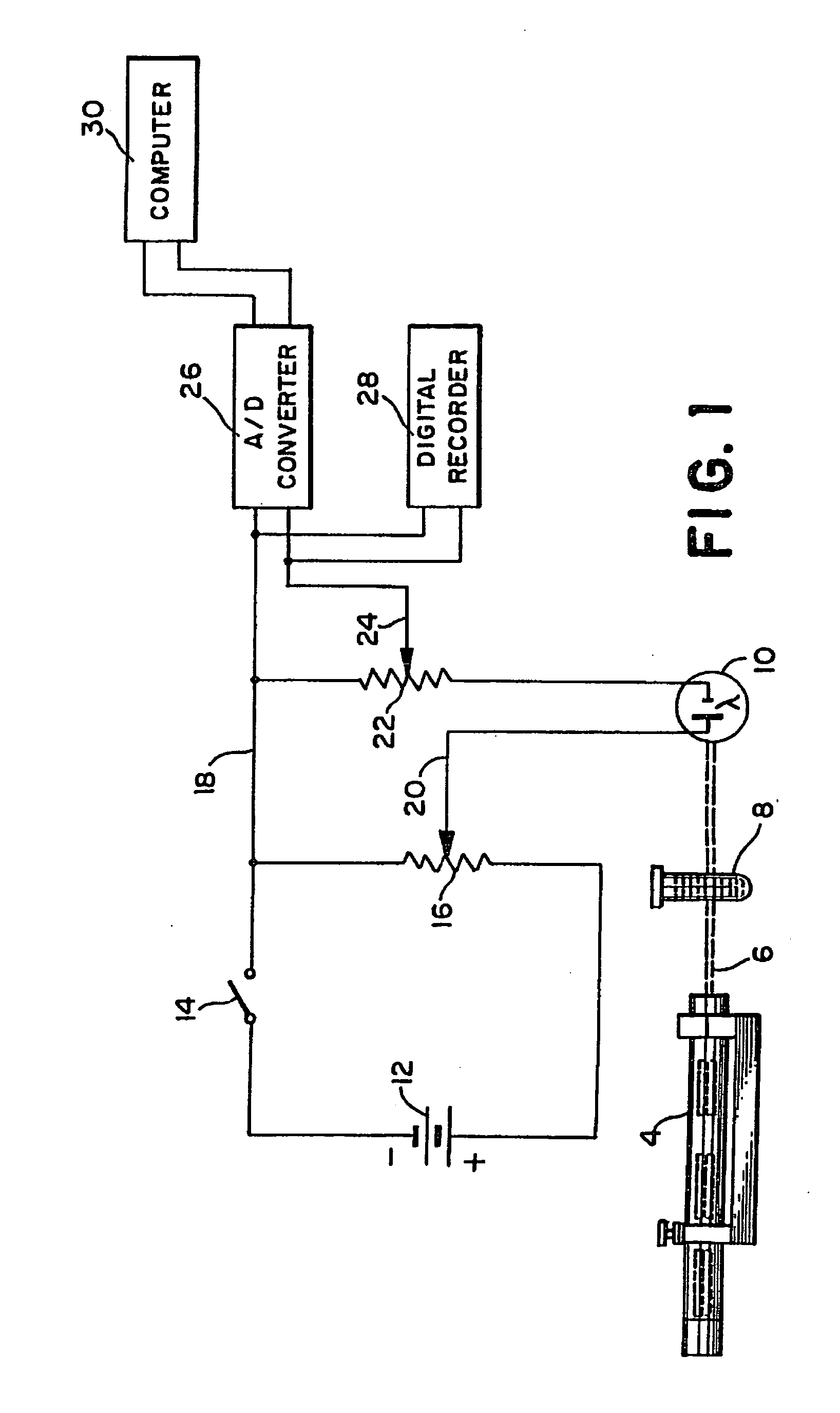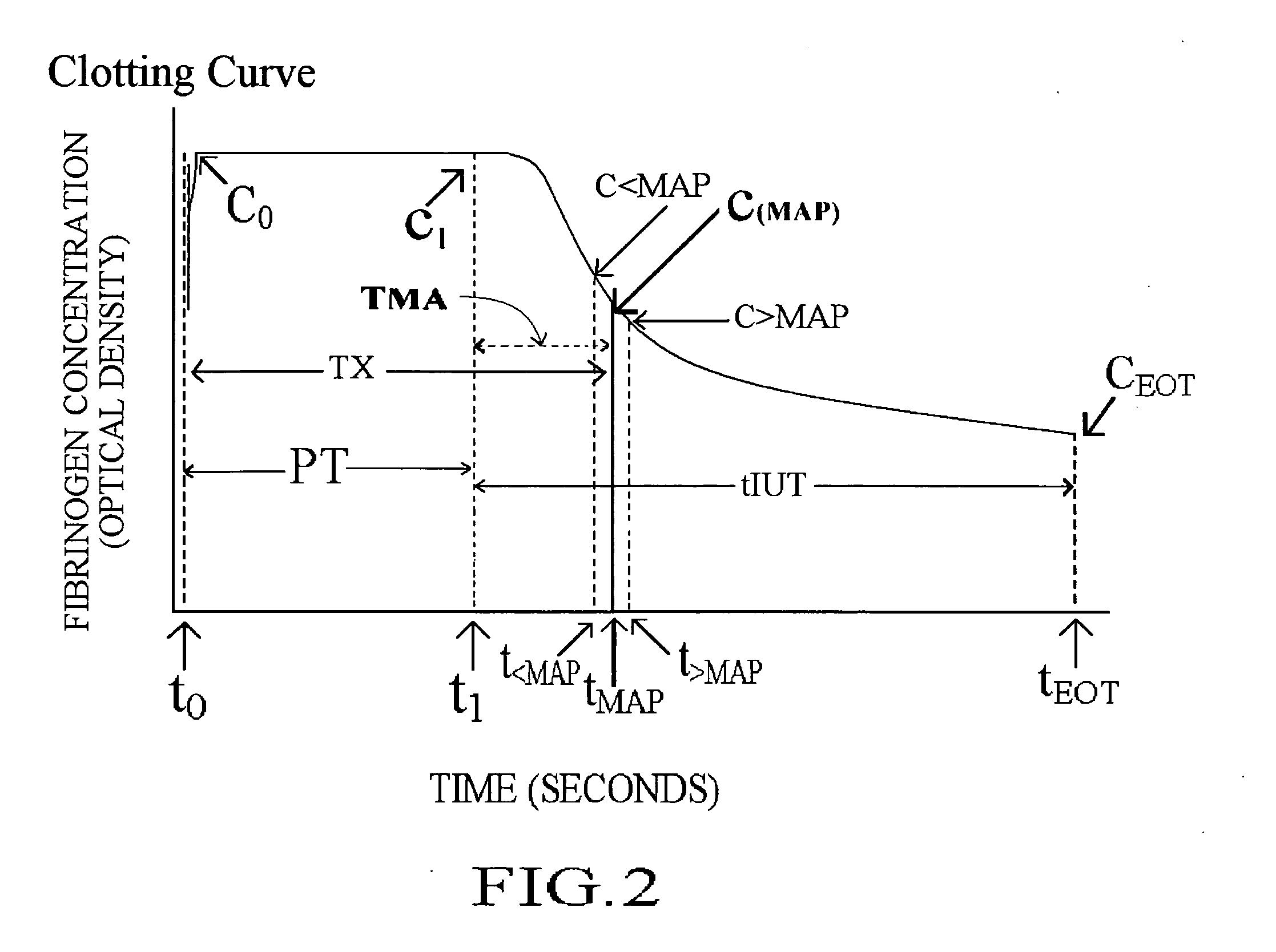Method and apparatus for evaluating prothrombotic conditions
a prothrombotic condition and prothrombotic technology, applied in the field of blood analysis, can solve the problems of patient deaths at st, numerous opportunities for error, and statistically and clinically significant differences in inr
- Summary
- Abstract
- Description
- Claims
- Application Information
AI Technical Summary
Benefits of technology
Problems solved by technology
Method used
Image
Examples
Embodiment Construction
[0039]Referring to the drawings, wherein the same reference numbers indicate the same elements throughout, there is shown in FIG. 1 a light source 4 which may be a low power gas laser, or other light producing device, producing a beam of light 6 which passes through a sample test tube, such as the container 8, and is received by detection means which is preferably a silicon or selenium generating photocell 10 (photovoltaic cell). Battery 12 acts as a constant voltage DC source. Its negative terminal is connected through switch 14 to one end of variable resistor 16 and its positive terminal is connected directly to the opposite end of variable resistor 16. The combination of battery 12 and variable resistor 16 provides a variable DC voltage source, the variable voltage being derivable between line 18 at the upper terminal of resistor 16 and wiper 20. This variable DC voltage source is connected in series with detection means photocell 10, the positive output of detection means photoc...
PUM
 Login to View More
Login to View More Abstract
Description
Claims
Application Information
 Login to View More
Login to View More - R&D
- Intellectual Property
- Life Sciences
- Materials
- Tech Scout
- Unparalleled Data Quality
- Higher Quality Content
- 60% Fewer Hallucinations
Browse by: Latest US Patents, China's latest patents, Technical Efficacy Thesaurus, Application Domain, Technology Topic, Popular Technical Reports.
© 2025 PatSnap. All rights reserved.Legal|Privacy policy|Modern Slavery Act Transparency Statement|Sitemap|About US| Contact US: help@patsnap.com



